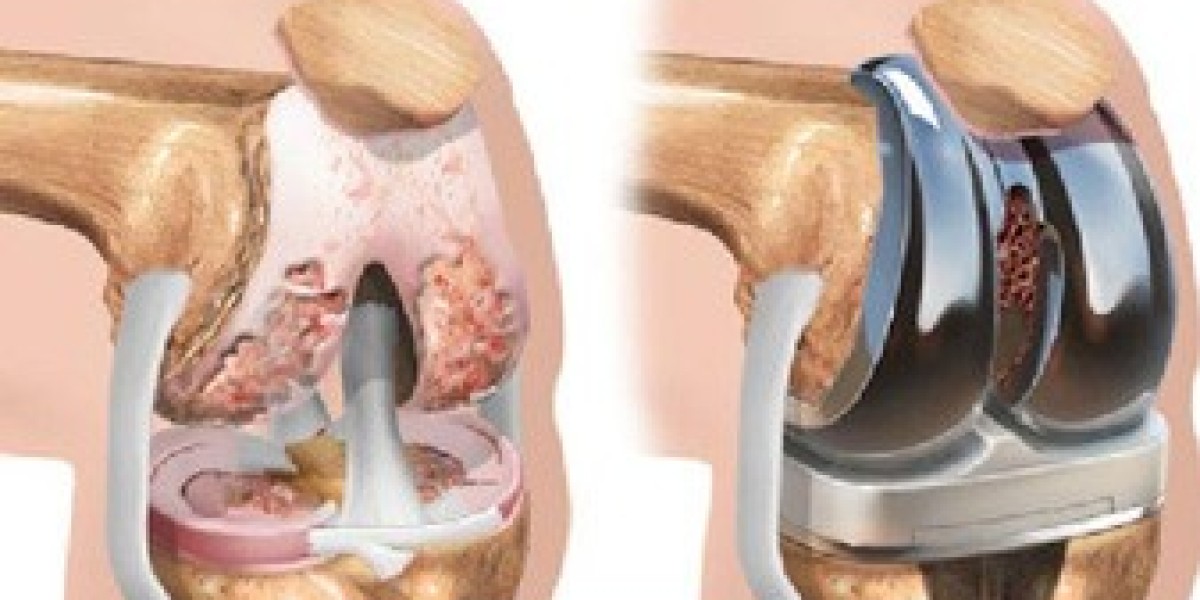Knee replacement surgery, like any major surgery, involves some level of pain and discomfort during the recovery process. However, the degree of pain varies between individuals and can be effectively managed with appropriate treatment.
1. Pain During the Surgery:
Knee replacement surgery, like any major surgery, involves some level of pain and discomfort during the recovery process. However, the degree of pain varies between individuals and can be effectively managed with appropriate treatment.
1. Pain During the Surgery:
- Anesthesia: During the procedure itself, you will not experience any pain because of the anesthesia used. Most patients undergo either general anesthesia or regional anesthesia.
- Since you’re unconscious or numbed, you won’t feel the surgical procedure happening. However, the recovery afterward is where most people start to experience pain.
2. Immediately After Surgery:
Once the anesthesia wears off, you will likely begin to feel pain, swelling, and discomfort around the knee joint. This is expected because the surgery involves cutting, removing, and replacing parts of the knee joint. You may also experience tightness and soreness as your body heals.
- Pain Level: Pain right after surgery can vary in intensity. Some people report mild discomfort, while others experience more significant pain, especially in the first 24 to 48 hours.
- Pain Management: Your healthcare team will give you medications to control pain, which may include opioids, anti-inflammatory drugs, and nerve blocks. Nerve blocks, given during surgery, may numb the area for a few hours or days after surgery, providing additional relief.
3. The First Few Days Post-Surgery:
- Swelling and Bruising: Swelling around the knee is common and can contribute to discomfort. Bruising around the surgical area may also occur.
- Intensity of Pain: Pain usually peaks within the first 2 to 3 days after surgery and starts to decrease gradually after that. The pain is most intense while you are recovering in the hospital, but your medical team will ensure that you are comfortable with the help of prescribed pain relievers.
- Ice and Elevation: Applying ice to the knee and keeping it elevated can significantly help in reducing swelling and alleviating pain. These methods, combined with medications, help control discomfort during this critical period.
4. During Physical Therapy:
- Rehabilitation Pain: Physical therapy is an important part of your recovery and can cause some discomfort as you work to regain motion and strength in the knee. Exercises to bend and straighten the knee may feel painful at first, especially when your muscles are weak or tight after surgery.
- Controlled Pain: The goal of physical therapy is to gradually increase the range of motion and strength. While the exercises might cause temporary discomfort, the pain will usually improve as you progress, and your mobility improves.
5. Longer-Term Recovery:
- Pain Reduction: As you move through recovery, the pain will generally decrease significantly. After the first few weeks, most patients report that their pain is much more manageable, and by the 3-month mark, discomfort typically diminishes substantially.
- Final Stages (6 months to 1 year): By the time you reach 6 months to 1 year after surgery, many people report minimal pain or no pain at all in the knee. At this stage, most patients are able to return to daily activities with a significantly improved quality of life, and the pain that was once a concern is no longer an issue.
6. Factors Influencing Pain Perception:
- Pain Tolerance: People have different pain thresholds, so while one person may experience only mild discomfort, another may find the pain more challenging.
- Health and Age: Younger, healthier individuals may recover with less pain, while older patients or those with additional health conditions might experience more discomfort or a longer recovery process.
- Surgical Complexity: If complications arise during surgery or if you have other health issues, the pain might be more pronounced, and the recovery time may be longer.
- Physical Therapy Effort: Following the physical therapy regimen closely can reduce pain in the long term, as it speeds up recovery, reduces stiffness, and helps regain strength.
Conclusion:
While knee replacement surgery does involve pain, it is manageable with the right care and pain relief measures. The first few days to weeks may be uncomfortable, but most people experience significant pain relief after the recovery period, with improved mobility and a reduction in the pain they had before the surgery. The key to a successful recovery is effective pain management during the initial stages, followed by consistent rehabilitation through physical therapy to ensure the knee heals properly and regains function. By 3 to 6 months, many patients find their pain completely subsides and are able to resume a more active lifestyle.
Anesthesia: During the procedure itself, you will not experience any pain because of the anesthesia used. Most patients undergo either general anesthesia or regional anesthesia.
Since you’re unconscious or numbed, you won’t feel the surgical procedure happening. However, the recovery afterward is where most people start to experience pain.
2. Immediately After Surgery:
Once the anesthesia wears off, you will likely begin to feel pain, swelling, and discomfort around the knee joint. This is expected because the surgery involves cutting, removing, and replacing parts of the knee joint. You may also experience tightness and soreness as your body heals.
Pain Level: Pain right after surgery can vary in intensity. Some people report mild discomfort, while others experience more significant pain, especially in the first 24 to 48 hours.
Pain Management: Your healthcare team will give you medications to control pain, which may include opioids, anti-inflammatory drugs, and nerve blocks. Nerve blocks, given during surgery, may numb the area for a few hours or days after surgery, providing additional relief.
3. The First Few Days Post-Surgery:
Swelling and Bruising: Swelling around the knee is common and can contribute to discomfort. Bruising around the surgical area may also occur.
Intensity of Pain: Pain usually peaks within the first 2 to 3 days after surgery and starts to decrease gradually after that. The pain is most intense while you are recovering in the hospital, but your medical team will ensure that you are comfortable with the help of prescribed pain relievers.
Ice and Elevation: Applying ice to the knee and keeping it elevated can significantly help in reducing swelling and alleviating pain. These methods, combined with medications, help control discomfort during this critical period.
4. During Physical Therapy:
Rehabilitation Pain: Physical therapy is an important part of your recovery and can cause some discomfort as you work to regain motion and strength in the knee. Exercises to bend and straighten the knee may feel painful at first, especially when your muscles are weak or tight after surgery.
Controlled Pain: The goal of physical therapy is to gradually increase the range of motion and strength. While the exercises might cause temporary discomfort, the pain will usually improve as you progress, and your mobility improves.
5. Longer-Term Recovery:
Pain Reduction: As you move through recovery, the pain will generally decrease significantly. After the first few weeks, most patients report that their pain is much more manageable, and by the 3-month mark, discomfort typically diminishes substantially.
Final Stages (6 months to 1 year): By the time you reach 6 months to 1 year after surgery, many people report minimal pain or no pain at all in the knee. At this stage, most patients are able to return to daily activities with a significantly improved quality of life, and the pain that was once a concern is no longer an issue.
6. Factors Influencing Pain Perception:
Pain Tolerance: People have different pain thresholds, so while one person may experience only mild discomfort, another may find the pain more challenging.
Health and Age: Younger, healthier individuals may recover with less pain, while older patients or those with additional health conditions might experience more discomfort or a longer recovery process.
Surgical Complexity: If complications arise during surgery or if you have other health issues, the pain might be more pronounced, and the recovery time may be longer.
Physical Therapy Effort: Following the physical therapy regimen closely can reduce pain in the long term, as it speeds up recovery, reduces stiffness, and helps regain strength.
Conclusion:
While knee replacement surgery does involve pain, it is manageable with the right care and pain relief measures. The first few days to weeks may be uncomfortable, but most people experience significant pain relief after the recovery period, with improved mobility and a reduction in the pain they had before the surgery. The key to a successful recovery is effective pain management during the initial stages, followed by consistent rehabilitation through physical therapy to ensure the knee heals properly and regains function. By 3 to 6 months, many patients find their pain completely subsides and are able to resume a more active lifestyle.



